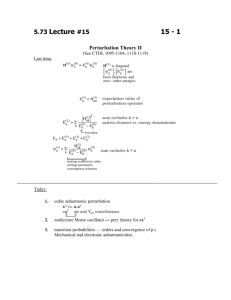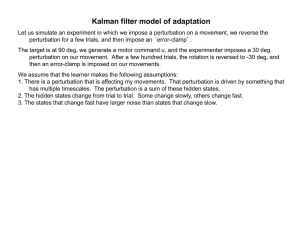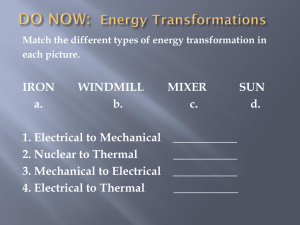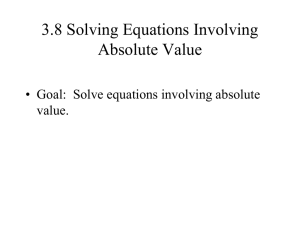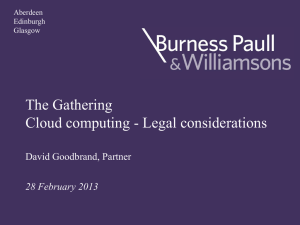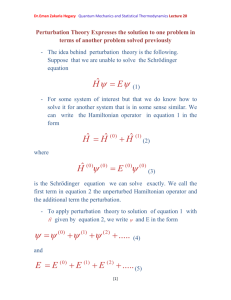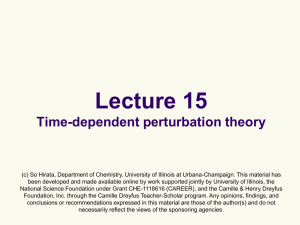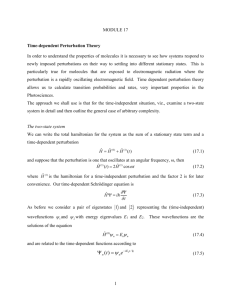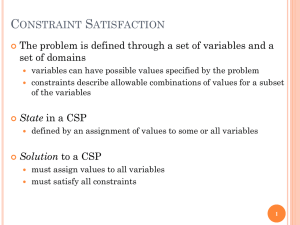Computational Singular Perturbation
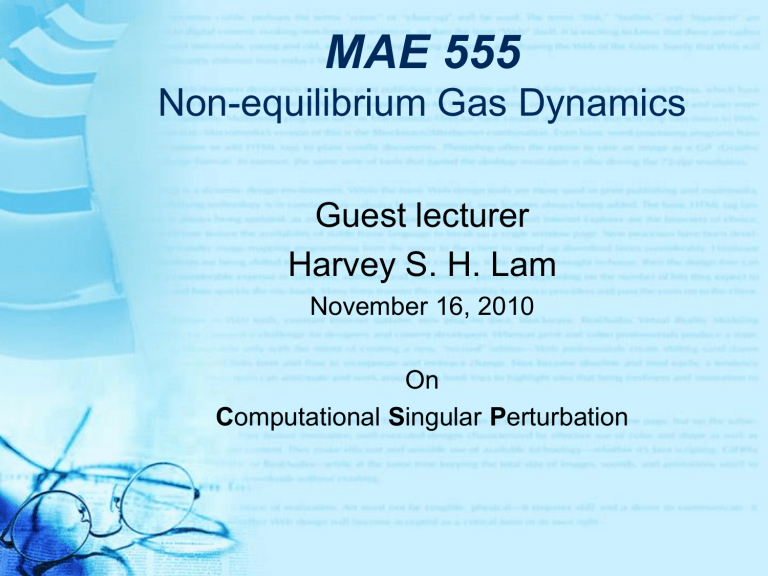
MAE 555
Non-equilibrium Gas Dynamics
Guest lecturer
Harvey S. H. Lam
November 16, 2010
On
C omputational S ingular P erturbation
Computational Singular Perturbation
Perturbation analysis takes advantage of a small parameter to obtain simplified models and insights .
When the usual perturbation analysis fails, the perturbation analysis which succeeds is called singular perturbation .
Paper and pencil singular perturbation analysis is a collection of tricks. Experience and good judgments about the subject matters are crucial.
Computational singular perturbation is a programmable procedure to general simplified models and insights for a (large) set of first order (non-linear) ordinary differential equations.
No experience or good judgments about the subject matters are needed.
The idea of iteration
How to find x given
How about
How to find y(t) given:
How about
Chemical Kinetics
The equations: where y is a vector of N dimensions, and there are R chemical reactions.
Both N and R may be large integers.
Usually R>N.
The Objective
To obtain a simplified model with K ODEs and N-K algebraic equations:
Want K as small as possible!
Paper and pencil example
N=R=2.
Original Eqns Rewritten…
The CSP Challenge
Can we do the same thing for large N and very complicated F ( y ) without knowing what the small parameter
is?
How does one extract physical insights from a mess of computer generated numbers?
For example, what insights are provided when some of the differential equations can be replaced by algebraic equations…
The questions…
What species are unimportant and can be ignored?
What reactions are unimportant and can be ignored?
Which (important) reaction rate constants must be known accurately?
Which (important) reaction rate constant need not be known accurately?
Who is doing what to whom and when?
“Old methods…”
Conservation of atomic elements
(also something else may be nearly conserved…)
The quasi-steady approximation on
“radicals”.
(need to guess who the radicals are…)
The partial equilibrium approximation on fast reactions.
(need to guess which reactions are fast)
Rewriting the original equations.
Initial choice of basis vectors
When you begin, you have all the stoichiometric vectors of all the reactions. You may use N linearly independent stoichiometric vectors for you a n
’s.
A better idea: use the N right eigenvectors of the NXN J matrix at t=0.
Order the eigenmodes in decreasing eigenvalue magnitudes.
If the problem were linear…
The eigenvectors that diagonalize the
Matrix will continue to diagonalize the
matrix.
But we are interested in non-linear problems. So after t=0, the
y
matrix with constant basis vectors will have offdiagonal terms.
The CSP idea
CSP provides a refinement algorithm to improve the quality of any set of basis vectors.
The quality of a set of basis vectors is the avoidance of fast-slow mode mixing in the solution. A good set has a block diagonal J matrix. CSP refinement makes the off-diagonal blocks smaller.
Notations…
CSP refinement algorithm:
Subscript/superscript means refined :
The CSP procedures
CSP radical pointers
CSP radical corrections
Output of CSP-insights
Some closing comments
On validation of models
On the effects of diffusion
On what predictions are unreliable
On usefulness of “slow manifolds”
Quasisteady vs partial equilibrim…
ILDM
Applications to control theory…
For limited time, these notes are available for downloading at: http://www.princeton.edu/~lam/documents/CSPmae555.ppt
These notes do not place emphasis on the mathematical details of
CSP which can be found in the published papers.

